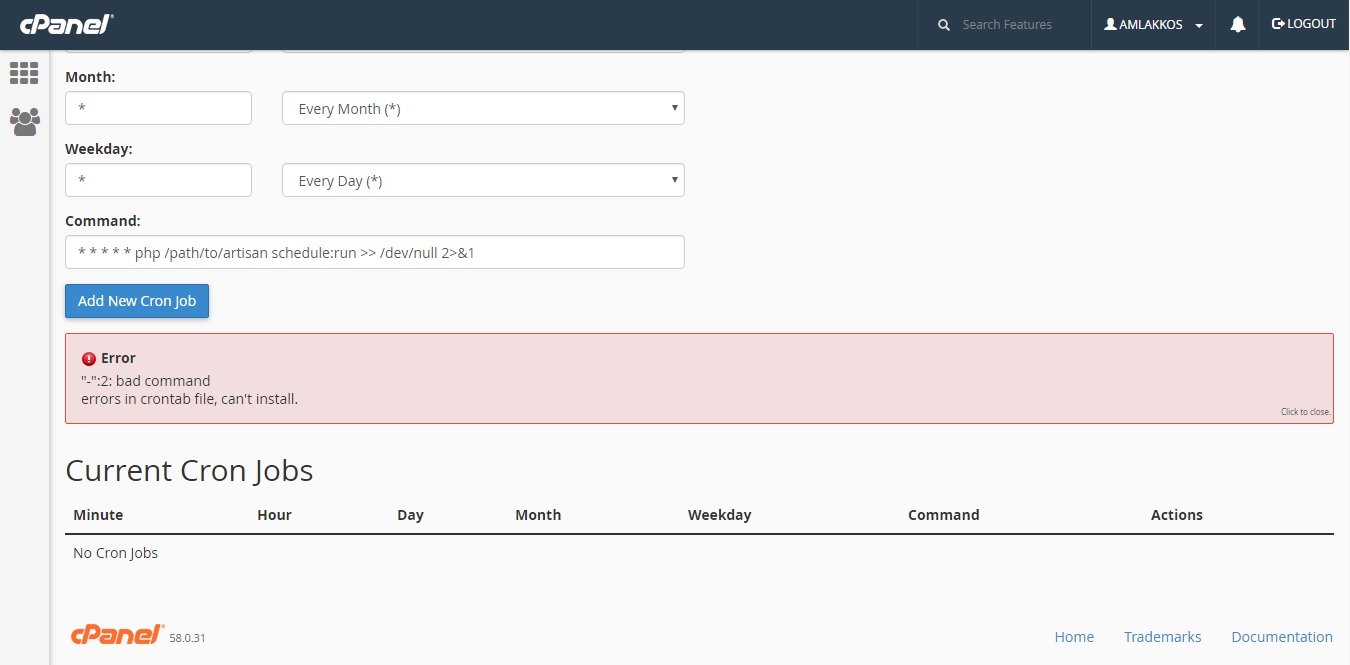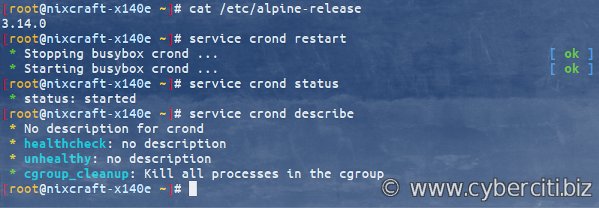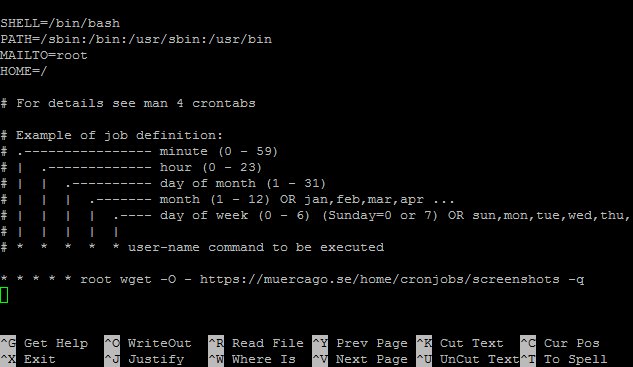Have you ever come across the term “cron syntax” and wondered what it meant? Well, worry no more! In this blog article, we will dive into the world of cron syntax, demystifying its complexities and shedding light on its significance in the world of computing. By understanding cron syntax, you will gain the power to schedule automated tasks and streamline your workflow with ease. So, let’s embark on this journey together and unravel the secrets of cron syntax, empowering you to take control of your time and productivity.
Cron Syntax: A Comprehensive Guide to Scheduling Tasks
Cron is a time-based job scheduling utility in Unix-like operating systems. It allows users to schedule recurring tasks to be executed automatically at specific intervals. The syntax used in cron is essential for creating and managing these scheduled tasks effectively. In this guide, we will explore the intricacies of cron syntax, providing you with a thorough understanding of how to utilize this powerful tool.
Basic Structure of a Cron Job
Before we dive into the details of cron syntax, let’s first understand the basic structure of a cron job. A cron job consists of six fields that define various aspects of the scheduled task. These fields are as follows:
- Minute (0 – 59)
- Hour (0 – 23)
- Day of the Month (1 – 31)
- Month (1 – 12)
- Day of the Week (0 – 7, where both 0 and 7 represent Sunday)
- Command to be executed
Understanding the Cron Syntax
Each field within the cron job is separated by a space. Additionally, you can use special characters and symbols to define recurring patterns or specify multiple values for a field.
Specifying Values in a Field
- Single Value: You can specify a single value for a field. For example, using “0” in the hour field will schedule the task to run at 12:00 AM.
- Multiple Values: You can specify multiple values in a field by separating them with commas. For example, “1,15,30” in the minute field will schedule the task to run at the 1st, 15th, and 30th minute of each hour.
- Range of Values: You can define a range of values by using a hyphen. For example, “1-5” in the hour field will schedule the task to run from 1 AM to 5 AM.
Specifying Special Characters
Cron provides several special characters that allow for greater flexibility in defining recurring patterns:
- Asterisk (*) – This character represents all possible values for a field. For example, using “*” in the hour field will schedule the task to run every hour.
- Comma (,) – Use the comma to separate multiple values or ranges within a field.
- Hyphen (-) – Use the hyphen to specify a range of values within a field.
- Forward Slash (/) – This character allows you to define step values. For example, using “*/5” in the minute field will schedule the task to run every 5 minutes.
Examples of Cron Syntax
Let’s look at some examples to better understand how to use cron syntax:
Example 1:
To schedule a task to run every day at 8:00 AM, the cron syntax would be:
0 8 * * * command_to_executeExample 2:
To schedule a task to run every Monday at 10:30 PM, the cron syntax would be:
30 22 * * 1 command_to_executeExample 3:
To schedule a task to run every hour from 9 AM to 5 PM, the cron syntax would be:
0 9-17 * * * command_to_executeExample 4:
To schedule a task to run every 15 minutes, the cron syntax would be:
*/15 * * * * command_to_executeCommon Cron Job Patterns
Now that we have covered the basics of cron syntax, let’s explore some common patterns used in cron jobs:
Daily Tasks:
To schedule a task that needs to run daily at a specific time, you can use the following syntax:
0 3 * * * command_to_executeThis example schedules the task to run every day at 3:00 AM.
Weekly Tasks:
To schedule a task that needs to run weekly on a specific day at a specific time, you can use the following syntax:
0 10 * * 5 command_to_executeThis example schedules the task to run every Friday at 10:00 AM.
Monthly Tasks:
To schedule a task that needs to run on a specific day of the month at a specific time, you can use the following syntax:
0 12 15 * * command_to_executeThis example schedules the task to run on the 15th day of every month at 12:00 PM.
Custom Intervals:
If none of the predefined patterns fit your requirements, you can create custom intervals using the appropriate values in each field. For example, if you want to schedule a task to run every 2 hours and 30 minutes, you can use the following syntax:
*/30 */2 * * * command_to_executeThis example schedules the task to run at every 30 minutes past the hour, every 2 hours.
Testing and Verifying Cron Jobs
Once you have set up a cron job, it is crucial to test and verify that it is working correctly. Here are a few methods to help you test and troubleshoot cron jobs:
Log Files:
Cron typically writes logs of its activities, which can be useful for debugging. You can find the log files in different locations depending on your system. Common locations are `/var/log/cron` or `/var/log/syslog`. Check these log files to see if there are any error messages or indications of the cron job’s execution.
Redirecting Output:
To ensure that you receive output or error messages from a cron job, it is important to redirect the output appropriately. You can redirect output to a file by appending `>> /path/to/output.log` to your command. This allows you to review the output and identify any issues that may arise.
Dry Run:
Before putting a cron job into production, it is a good practice to perform a dry run. This involves executing the command manually to verify that it behaves as expected. This can help prevent any unexpected behavior or errors when the cron job is executed automatically.
Troubleshooting Cron Jobs
Sometimes, despite careful configuration, cron jobs might not execute as intended. Here are a few common issues and troubleshooting steps to help you resolve them:
Incorrect Path:
Cron jobs run in a limited environment, and therefore, it is crucial to specify the full path to any commands or scripts used within the job. If your cron job relies on environment variables or custom paths, make sure to define them explicitly within the cron job itself.
Permissions:
Ensure that the user executing the cron job has the necessary permissions to access the file or execute the command. Incorrect permissions can result in the cron job failing to run or producing unexpected results.
Execution Timezone:
By default, cron jobs use the system’s default timezone. If the desired execution time is in a different timezone, it is essential to set the appropriate timezone within the cron job itself. This can be done by prefixing the command with the desired timezone, for example:
0 3 * * * TZ=America/New_York command_to_executeMastering cron syntax is essential for effectively scheduling and automating tasks in Unix-like operating systems. By understanding the structure and nuances of cron syntax, you can harness the power of cron and streamline your workflow. Whether you need to schedule daily backups, run periodic maintenance tasks, or automate other operations, the flexibility of cron syntax provides you with the tools to unlock the full potential of time-based job scheduling.
Learn how to write Cron Expression under 5 minutes
Frequently Asked Questions
What is cron syntax?
Cron syntax is a standardized way of defining time intervals for executing tasks in Unix-like operating systems. It consists of five fields that represent the minute, hour, day of the month, month, and day of the week when a particular command or script should be run.
How do I write a cron expression?
A cron expression consists of five or six fields separated by spaces. The basic format is:
* * * * * | | | | | | | | | +----- Day of the Week (0 - 7) (Sunday=0 or 7) | | | +------- Month (1 - 12) | | +--------- Day of the Month (1 - 31) | +----------- Hour (0 - 23) +------------- Minute (0 - 59)
The first five fields are mandatory and represent minute, hour, day of the month, month, and day of the week, respectively. Optionally, you can include a sixth field to specify the year.
What are the allowed values in a cron expression?
The allowed values for each field in a cron expression are as follows:
- Minute: 0 – 59
- Hour: 0 – 23
- Day of the Month: 1 – 31
- Month: 1 – 12
- Day of the Week: 0 – 7 (both 0 and 7 represent Sunday)
- Year: 1970 – 2099 (optional)
What are some examples of cron expressions?
Here are a few examples of cron expressions:
* * * * *: Runs the command or script every minute of every hour, every day.0 9 * * *: Runs the command or script at 9:00 AM every day.0 0 * * 1: Runs the command or script at midnight on every Monday.0 0 1 1 *: Runs the command or script at midnight on January 1st every year.
What are some special characters used in cron syntax?
There are a few special characters that can be used in cron syntax:
*(asterisk): Represents all possible values within a field. For example,*in the minute field means “every minute”.,(comma): Specifies multiple values. For example,1,3,5in the hour field means “at 1 AM, 3 AM, and 5 AM”.-(dash): Specifies a range of values. For example,10-15in the day of the month field means “from the 10th to the 15th of the month”./(forward slash): Specifies increments. For example,*/5in the minute field means “every 5 minutes”.?(question mark): Used in the day of the week field to specify no specific value. It is typically used when the day of the week is not relevant.
Final Thoughts
Cron syntax provides a powerful and flexible way to schedule and automate tasks on Unix-based systems. By understanding the structure and components of cron syntax, users can efficiently set up recurring tasks to run at specific times or intervals. The minute, hour, day of the month, month, and day of the week fields enable precise scheduling, while the use of asterisks or specific values allows for flexibility. By mastering cron syntax, users can effectively manage their system’s automated processes and improve productivity. Understanding and utilizing cron syntax is essential for any system administrator or individual looking to automate tasks on Unix-based systems.




